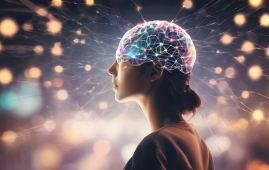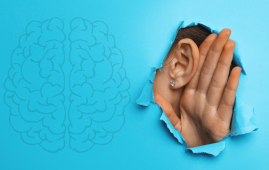

Conversational Brain Encoding Revealed in New Study
Key Summary
A groundbreaking neurocomputational study from Osaka University and NICT reveals how our brains structure conversational content in real time through brain encoding. Using advanced AI models and fMRI, researchers show that language processing differs notably between speaking and listening.
How Was the Study Conducted?
Researchers recorded fMRI data from eight participants while they engaged in spontaneous dialogue with an experimenter. To interpret the brain’s response to conversational content, spoken language was converted into numerical embeddings using a GPT-based AI model. This allowed the team to map brain activity across multiple linguistic timescales, from single words to full discourse.
Distinct Neural Patterns: Production vs. Comprehension
The study demonstrates that overlapping brain areas encode linguistic meaning during both speaking and listening. However, neural integration of words into sentences and discourse varies significantly depending on task, revealing differentiated cortical mechanisms for content generation and comprehension.
Key Regions & Linguistic Timescales
Using GPT-derived vectors, neural activity in multiple regions was predicted based on conversational content. Researchers noted that fast timescales captured word-level processing in primary language areas, while slower timescales associated with sentence and discourse integration involved higher-order cortical networks
Clinical and Technological Implications
These findings advance our understanding of real-time dialogue processing. For clinicians working with language disorders, this research underscores distinct neural pathways engaged during speech production versus comprehension. Additionally, applying AI-based embeddings alongside neuroimaging paves the way for brain-inspired computational models and improved diagnostics
What’s Next in Conversational Brain Research?
Lead researchers, including Masahiro Yamashita and Shinji Nishimoto, aim to investigate how the brain selects among potential responses in live dialogue settings. Understanding this rapid, adaptive process could inform therapies for language impairments and enrich conversational AI
More information: Masahiro Yamashita et al, Conversational content is organized across multiple timescales in the brain, Nature Human Behaviour (2025). DOI: 10.1038/s41562-025-02231-4.
more recommended stories
 Engineered Herpes Virus for Glioblastoma Immunotherapy
Engineered Herpes Virus for Glioblastoma ImmunotherapyA Powerful New Direction in Glioblastoma.
 Poor Kidney Function and Alzheimer’s Biomarkers Explained
Poor Kidney Function and Alzheimer’s Biomarkers ExplainedPoor kidney function may influence levels.
 Coffee and Cognitive Function: Evidence Review
Coffee and Cognitive Function: Evidence ReviewA new narrative review in Cureus.
 How Hormones Shape Dopamine-Driven Learning
How Hormones Shape Dopamine-Driven LearningNYU Study on Hormones and Cognitive.
 Personalized Pain Care Transforms Parkinson’s Treatment
Personalized Pain Care Transforms Parkinson’s TreatmentNew UniSA research underscores the urgent.
 Blood test shows promise for faster ALS diagnosis
Blood test shows promise for faster ALS diagnosisSummary / Key Points A UCLA.
 Selective Attention Is Exclusively Cortical in Humans
Selective Attention Is Exclusively Cortical in HumansSelective Attention: New Insights from the.
 Action Video Games and Brain Health: Study Insights
Action Video Games and Brain Health: Study InsightsGaming and Brain Structure: What MRI.
 Neuroscientists Map the Brain’s Speech & Language Pathways
Neuroscientists Map the Brain’s Speech & Language PathwaysA groundbreaking study has revealed how.
 Chronic Cocaine Use Increases Impulsivity, Study Finds
Chronic Cocaine Use Increases Impulsivity, Study FindsA recent study published in eNeuro.

Leave a Comment